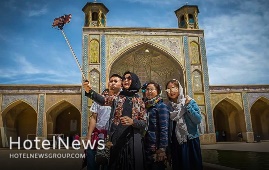
Though international tourism has revealed signs of a rebound as some destinations eased travel restrictions over the past couple of months, the lack of international coordination and slow vaccination rates in several countries and regions suggest it may need a longer time to bounce back. On the one hand, according to the latest edition of the UNWTO World Tourism Barometer, an estimated 54 million tourists crossed international borders in July 2021, down 67% from the same month in 2019, but the strongest results since April 2020. This compares to an estimated 34 million international arrivals recorded in July 2020, though well below the 164 million figure recorded in 2019. On the other hand, another research conducted by Oxford Economics on behalf of the World Travel and Tourism Council (WTTC) reveals that countries’ GDP is expected to increase only by less than one-third, as tourism is recovering even slower than expected. The research was based on the current vaccination rates globally, consumer confidence, and less stringent entry and travel restrictions in the world. However, prospects for September-December 2021 remain mixed, according to the latest UNWTO Panel of Experts survey, with 53% of respondents believing the period will be worse than expected. Only 31% of experts expect the point to better results towards the end of the year. The survey also shows that most tourism professionals continue to expect a rebound driven by unleashed pent-up demand for international travel in 2022, mostly during the second and third quarters. Almost half of all experts (45%) continue to see international tourism returning to 2019 levels in 2024 or later, while 43% point to a recovery in 2023. By regions, the largest share of experts pointing to a return to 2019 levels in 2024 or later are in Asia and the Pacific (58%). In Europe, half of the respondents indicate this could happen in 2023. West Asia is the most optimistic, with a full recovery expected by 2022. The sector needs leaders who can recognize ideas that will make a difference, who will innovate and back entrepreneurs and start-ups. As mentioned by the UNWTO Barometer, most destinations reporting data for June and July 2021 saw a moderate rebound in international arrivals compared to 2020. Nevertheless, 2021 continues to be a challenging year for global tourism, with international arrivals down 80% in January-July compared to 2019. Asia and the Pacific continued to suffer the weakest results in the period January to July, with a 95% drop in international arrivals compared to 2019. West Asia (-82%) recorded the second-largest decline, followed by Europe and Africa (both -77%). The Americas (-68%) saw a comparatively smaller decrease, with the Caribbean showing the best performance among world subregions. Meanwhile, some small islands in the Caribbean, Africa, and Asia and the Pacific, together with a few small European destinations recorded the best performance in June and July, with arrivals close to, or sometimes exceeding pre-pandemic levels.” Iran preparing for tourism rebound Iran considers reopening borders to foreign vacationers as its new tourism minister has said the government will soon scrap visa restrictions. Cultural Heritage, Tourism and Handicrafts Minister Ezzatollah Zarghami made the announcement last month following his conversations with President Seyyed Ebrahim Raisi, however, the minister did not specify the date upon which those regulations would be scrapped. According to some sources, fully vaccinated travelers would be embraced first under the updated regulations. The average of international travels to and from the Islamic Republic fell by 80 percent during the past Iranian calendar year 1399 (ended on March 20, 2021) from a year earlier. “During this period, 4,343,163 passengers entered the country, which included 3,030,464 Iranian passengers and 512,699 international travelers,” according to Arezou Ghaniun, an official with the Islamic Republic of Iran's Customs Administration. “From the beginning of 1399 to the end of it, we saw a significant reduction in passenger traffic to the country or vice versa in land, sea, rail and air borders, which were caused by various coronavirus restrictions.” Months of steep recession has taken its toll. Many travel insiders, hoteliers, and tour operators have faced big dilemmas such as bankruptcy, unemployment, debts, and the prospects of not being competitive on the international level. Panels of travel experts have mapped out new marketing strategies hoping Iran’s tourism would get back on its feet once again. For instance, the Head of the Iranian Tour Operators Association has said the international tourist flow to Iran will return to normal until 2022. Iran is potentially a booming destination for travelers seeking cultural attractions, breathtaking sceneries, and numerous UNESCO-registered sites. Under the 2025 Tourism Vision Plan, Iran aims to increase the number of tourist arrivals from 4.8 million in 2014 to 20 million in 2025. Domestic tourism as a propeller in COVID era The annual UNWTO Executive Training Programme, which was held in the Maldives from October 5 to 8, sharpened the focus on harnessing the power of domestic tourism to drive recovery and growth in destinations across Asia and the Pacific. Now in its 15th year, the event brought together representatives of 25 countries, with six (Iran, Sri Lanka, Afghanistan, Bangladesh, Mongolia, and Nepal) joining hosts in the Maldives to attend the training sessions in person. Reflecting the restart of domestic tourism ahead of international tourism, both across Asia and the Pacific and globally, the event focused on enabling destinations of all sizes to capitalize on this trend. Opening the event, UNWTO Secretary-General Zurab Pololikashvili stressed that, as tourism restarts in many parts of the world, “the sector needs leaders who can recognize ideas that will make a difference, who will innovate and back entrepreneurs and start-ups”. Confidence in travel rising sluggishly Such an enhancement was underpinned by the reopening of many destinations to international travel, mostly in Europe and the Americas. The relaxation of travel restrictions for vaccinated travelers, coupled with the progress made in the roll-out of COVID-19 vaccines, contributed to lifting consumer confidence and gradually restoring safe mobility in Europe and other parts of the world. In contrast, most destinations in Asia remain closed to non-essential travel. According to UNWTO Secretary-General Zurab Pololikashvili, there is a strong demand for international tourism, and many destinations have started welcoming visitors back safely and responsibly. However, the true restart of tourism and the benefits it brings remains on hold as inconsistent rules and regulations and uneven vaccination rates continue to affect confidence in travel,” Pololikashvili says.
Create: Oct 10, 2021 Edit: Oct 10, 2021 Regional News
A project to restore and reinforce the ancient Saint John Church has begun in the village of Sohrol, near Shabestar city in East Azarbaijan province, the deputy provincial tourism chief has announced. The project involves the reinforcement of the church’s main structure and its foundation, as well as repairing the damaged parts, Alireza Quchi said on Saturday. Rehabilitation work has been ongoing on the historical structure for the past several years in order to make it stronger, the official added. Last year retaining walls for stabilizing soil around the monument were constructed to prevent it from being swept away by a landslide, he explained. Also known as Sohraqeh Church, the Armenian Catholic church was built in circa 5th century, but it was rebuilt on the older church foundation in 1840 by Samson Makintsev, a Russian general in the service of Iran during the Qajar era. The historical monument was inscribed on the National Heritage list in 1968. Iran is home to several ancient and historical churches. Christians, Jews, and Zoroastrians are the most significant religious minorities in the country with Christians constituting the bulk. Iranian Azarbaijan was the center of several ancient civilizations. It formed part of Urartu and later of Media. In the 4th century BC, it was conquered by Alexander the Great and was named Atropatene after one of Alexander’s generals, Atropates, who established a small kingdom there. The area returned to Persian (Iranian) rule under the Sasanians in the 3rd century CE.
Create: Oct 10, 2021 Edit: Oct 10, 2021 Regional News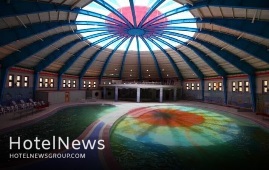
A modern hydrotherapy center was inaugurated in the tourist city of Meshkinshahr, northwestern Ardebil province, on Friday. A budget of 160 billion rials ($3.8 million at the official exchange rate of 42,000 rials per dollar) was allocated to the project, the provincial tourism chief announced during the inauguration ceremony. Situated in the Qutursui tourist area, the center has the most acidic mineral spa in the world, CHTN quoted Nader Fallahi as saying. Water for the hydrotherapy center is sourced from hot water springs in the area, which is beneficial for skin ailments, the official added. This new complex, which features separate sections for women and men, will allow Meshkinshahr to attract more tourists from abroad and grow its tourism industry twice as fast as before, he noted. Meshkinshahr embraces several historical sites including Qale Khohneh (“Old Castle”), the ancient site of Shahr-e Yeri, and Qahqaheh castle. Situated near the high Mount Sabalan, Meshkinshahr enjoys a moderate mountainous climate and the Sabalan summit can be seen in the south of the city with eye-catching sceneries. The antiquity of the city dates back to the early centuries of Islam but in the Safavid era, it was thriving even more. The city is well known for its rugs and its mineral springs. Meshkinshahr suspension bridge with 345 meters long, 3 meters wide, and 80 meters high, which was inaugurated in 2015 and is said to be the largest of its kind in West Asia, is also one of the top tourist destinations of the city.
Create: Aug 1, 2021 Edit: Aug 1, 2021 Regional News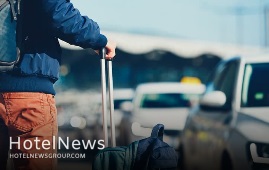
Coming out of the pandemic, guest demands have irreversibly changed. They don’t want cookie-cutter rooms; they want experiences. This harks back to the push over the previous decade to make our properties more ‘locally authentic’. Now, with lean teams and skeleton crews, the only way to effectively meet this demand is through technology.For the post-pandemic travel landscape, local authenticity means more than just a cursory immersion in the arts, culture and heritage of one’s locale. It also equals peace of mind because, in light of the residual anxiety over COVID-19, guests need to feel as though their specific requests are being handled.As a simple leisure scenario, picture yourself going on an international vacation with your loved one for the first time since the virus struck. You have all the new airport procedures to contend with. You’ve been wearing a mask for hours on end, which is inherently uncomfortable. And now you’re in a foreign city and country and don’t know what attractions and stores have reopened or what the local safety guidelines are, on top of a myriad of other questions that would require some digging online. Instead, wouldn’t it be great to know that your host hotel has your back the whole way?In the past, luxury brands have provided this kind of omniscience by deploying an army of staffers, but this model won’t jive in the post-pandemic, hyper-labor-efficient market conditions. Moreover, hotels must be proactive in the pre-arrival stage to ensure incoming guests have everything that they need and to make arrangements on their behalf. This sets the pace for a great onsite experience in lieu of the outdated ‘reactive’ process of waiting for guests to reach out to you with their inquiries. Done right, hotels can utilize integrated platforms and build a versatile CRM to connect the entire guest journey that also offers a clear counterargument to the largely self-serve nature of home-sharing accommodation providers such as Airbnb. Here are five ideas to help you incorporate this newfangled, full-service model. 1. Home-sharing platforms offer a direct, two-way messaging service with the accommodation host, and hotels must do the same. Brands should be using a chatbot to immediately respond to the simpler questions –which represent the majority of inquiries – then bouncing the more complex ones onto your front desk or concierge. Ditto for the voice channel where booking engines are available 24/7 and so too must your intake team be ready at all hours in order to win the business. 2. Speaking of booking engines, these should no longer be only for rooms, particularly if we want to continue to push guests towards our websites from the OTAs. Customers should be able to plan their entire trip itinerary from these portals, starting with dining reservations and spa appointments through to arrival amenities and perhaps a few ‘surprise and delight’ freebies such as their preferred, complimentary welcome refreshment or departure gift. With so much confusion about what’s open and what’s not, being an ambassador means guiding guests through this uncertainty as early in the customer journey as possible. 3. Physically getting to an accommodation booked through a home-sharing platform is mostly a laissez-faire ordeal. So, why can’t hotels offer bespoke, point-to-point guidance on transportation to and from the rail station or airport, as well as recommendations on how to get to the city or region? As a guest’s perception of your arrival experience can depend on the agony of how one arrives at the hotel, why leave this to chance? Besides better integrations to flight trackers so that you know exactly when your guests are expected to arrive, such innovations as autonomous vehicles are just around the corner, which could drastically bring down the costs of shuttle services. Grandiose for now, perhaps a present-day possibility would be a flight tracker integration so that you know when guests are expected to arrive and can be ready with a warm welcome. 4. The future of travel will be more purpose-driven. Namely, with so many anxiety-riddled barriers following COVID-19, guests will want to maximize their time while aboard. Planning a guest’s itinerary or making local recommendations has traditionally fallen under the purview of the concierge, but the time is right for building a ‘pick your own adventure’ program of bundled, turnkey half-day and full-day activities. This will require deeper integrations with third-party operators as well as a rethink of what onsite or offsite services are most meaningful for guests based upon their given travel purpose. For instance, a late-afternoon, post-meeting relaxation package with a whiskey tasting, revitalizing nosh and back massage will have vastly different appeal from a daylong sightseeing tour that includes timed entrances to exclusive local events. 5. The post-stay relationship is where home-sharing hosts are weakest. The platform does the brunt of this, focusing more on exploring new destinations rather than return visits. For hotels, traditionally the last interaction between guest and staff was often a checkout at the front desk where the final bill was confirmed, representing an emotionless, transactional touchpoint. Now with contactless checkout, hotels can transform this into a meaningful ‘thank you’ gesture followed by a series of one-to-one messages based upon what a guest utilized while onsite. With a fully integrated CRM, this messaging can be sentient insofar as knowing when to push for additional sales and when to simply keep past guests up to date on the latest happenings.
Create: Jul 28, 2021 Edit: Jul 28, 2021 Hotel Management
The 108-room Fairfield Inn & Suites by Marriott in Mansfield, Massachusetts is now open today, Wednesday, July 14, 2021 with a new décor that provides guests with a feeling of warmth and calmness while traveling. Located at 50 Reservoir Street directly across from the Xfinity Center, the Fairfield Inn & Suites Mansfield will operate as a Marriott franchise, owned by Reservoir Hotel Partners LLC and managed by Lafrance Hospitality of Westport, Massachusetts. General Manager Angela Melanson and Area Director of Sales Ted Zlydaszek lead the management team for Lafrance Hospitality. Whether traveling for business or pleasure, the Fairfield Inn & Suites Mansfield offers guests convenient access to the Xfinity Center – a popular outdoor amphitheater, TPC Boston golf club, and shopping at Mansfield Crossing and Wrentham Village Premium Outlets. Delivering both function and comfort, our new design and décor elevate the Fairfield brand, setting a new standard in the moderate tier category,” Diane Mayer, Vice President and Global Brand Leader, Classic Select Brands. “At Fairfield Inn & Suites, we provide an easy, positive and productive travel experience, as well as the promise of consistent and reliable service at an exceptional value. The Fairfield Inn & Suites Mansfield is a truly stunning example of the brand’s contemporary look and feel, and we are pleased to introduce Fairfield Inn & Suites hotels in the Mansfield area.” The new décor package is warm, timeless, forward-thinking, and inviting with simple nods back to the brand’s heritage. Specific elements meant to evoke feelings from the Fairfield Farm include a farmhouse table in the lobby for gathering and connecting, photography from the Fairfield Farm serving as artwork in the lobby and guest rooms, natural materials and unique textures featured throughout, and a history wall in every property showcasing the brand’s roots. The new guestroom design is impactful, unique and addresses the functional needs of the Fairfield guest for a seamless experience. The room was designed with the modern traveler’s needs to stay productive on the road in mind without overcomplicating the guestroom. Each room features a modern lounge chair, serving as both functional and comfortable to either work or relax in. The artwork in the room takes center stage with the window treatment acting as a focal point, displaying photography taken at the Fairfield Farm. The material is sheer and allows light to pass through the photography, warming up the room and creating a comfortable environment. The guestrooms also feature a mobile desk, a comfortable couch, refrigerator, coffeemaker and microwave. Additional hotel amenities include a lobby bar, an indoor heated swimming pool, an outdoor patio with a fire pit, a large fitness center equipped with a Peloton, free Wi-Fi and fax and copy services. A complimentary hot breakfast, featuring oatmeal, scrambled eggs, sausage, make-your-own waffles and other healthy items, such as fruit, yogurt, and whole grain cereals and breads is also available.
Create: Jul 17, 2021 Edit: Jul 17, 2021 International News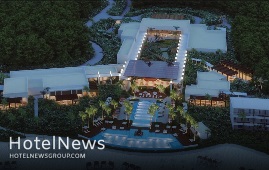
Leading global hospitality company, Hilton, announced today the signing of three managed resorts in Mexico, furthering the company’s all-inclusive and luxury expansion plans: Hilton Vallarta Riviera All-Inclusive Resort, Hilton Tulum All-Inclusive Resort and the luxurious Conrad Tulum. The newest additions to the company’s portfolio showcase Hilton’s deep-rooted commitment to growing its unrivaled offerings in Mexico, where Hilton has more than 70 hotels open and more than 30 in the development pipeline. “Mexico has always been an incredibly important destination for Hilton. These new additions are one more symbol that tourism in Mexico is rebounding and it is with great pride that we continue evolving our offerings in this burgeoning market, especially in the luxury and all-inclusive segments,” said Danny Hughes, Executive Vice President and President, Americas, Hilton. “We are extremely proud of our new products, ongoing partnership with Parks Holdings and the resilient Team Members who are working to bring the warmth of hospitality to the new resorts entering our portfolio.” A development by Parks Hospitality and owned by Fibra UNO, Hilton Vallarta Riviera All-Inclusive Resort is expected to convert in Q4 2021. Situated between the beaches of the Bay of Banderas and the majestic Sierra Madres Mountain, the 444-room AAA Four Diamond award-winning resort features a picturesque private beach, two glistening pools, full-service spa, fitness center, six craft cocktail bars, and seven specialty restaurants offering a variety of cuisine including Asian, Italian and Mexican flavors, as well as seafood and tapas options. Catering to the evolving needs of today’s business traveler, the resort offers nearly 26,000 square feet divided with 13,000 square feet of outdoor event space and 13,000 square feet of flexible indoor meeting space. Owned and developed by Parks Hospitality, Conrad Tulum and Hilton Tulum All-Inclusive Resort are anticipated to join the Hilton portfolio in Q4 2021 and Q1 2022 respectively. The distinctly unique hotels will each provide guests with a brand-exclusive experience featuring world-class dining and extensive recreation options, while offering visitors access to shared amenities including a meetings and events complex and a state-of-art spa. “We are honored and excited to be extending our successful partnership with Hilton with these iconic resorts and bringing new unprecedented luxury options to Tulum. We believe Mexico’s unique combination of people, culture, gastronomy, and natural beauties, make it the best global destination for tourism and we look forward to our continued future growth with Hilton. I would like to thank all of Parks, FUNO and Hilton’s team for all their hard work in bringing these amazing projects to reality,” said Charles Elmann Fasja, CEO Parks Holdings. Nestled among verdant tropical vegetation, overlooking the Caribbean Sea’s turquoise waters, and situated on an expansive stretch of beach, the new-build 349-room luxurious Conrad Tulum will be Conrad Hotels & Resorts’ first hotel in Quintana Roo on the eastern coast of the Yucatan Peninsula. Located near one of the best-preserved Mayan sites in Mexico, the property will provide a secluded haven for travelers featuring a bold design aesthetic inspired by Tulum’s lush landscape, picturesque beaches, and surrounding nature reserves. In addition to elegantly appointed rooms, the new hotel’s selection of accommodations will feature contemporary and sophisticated master suites, governor suites and presidential suites. Guests can choose from seven world-class restaurants and bars featuring an array of cuisine options from Mediterranean and Asian to a special Chef Table’s dining experience and relax and unwind in five pools. Like other properties in the Conrad Hotels & Resorts portfolio, Conrad Tulum will draw on the destination’s local influence and offer a distinct experience for travelers. Travelers will enjoy an enriching escape with effortless and passionately delivered service as they explore and immerse themselves in Tulum’s culture and community. The 735-room oceanfront Hilton Tulum All-Inclusive Resort will introduce travelers to an upscale and elevated all-inclusive experience in this sought-after destination. Set to boast unrestricted views of the picturesque waters of the Caribbean Sea, the resort will offer seven dining experiences featuring international cuisine, an expansive multiple pool complex with a waterpark, and a secluded beach. In addition to the variety of dining and recreation options at the luxurious Conrad Tulum or Hilton Tulum All-Inclusive Resort, all guests at either hotel will have access to a 21,500-plus square foot spa, with 16 treatment rooms and a pool, in a private and quiet area surrounded by tropical resort grounds. Guests visiting for meetings or events will have access to a 55,000 square foot convention center and an auditorium that seats up to 400 people. Continued Growth in Mexico Hilton continues to showcase confidence in the tourism industry’s rebound, including in Mexico as seen with the recent opening of The Yucatan Resort Playa Del Carmen, Tapestry Collection by Hilton as well as the upcoming Hilton Cancun, an All-Inclusive Resort located on 100 acres of Mayan coastline with a pool complex, 12 all-inclusive culinary experiences and 715 guestrooms. With these latest additions, travelers can choose from six Hilton all-inclusive resorts in Mexico and four luxury resorts, including the renowned Waldorf Astoria Los Cabos Pedregal, the recently opened Conrad Punta de Mita, and Waldorf Astoria Cancun, debuting in 2022. The addition of these resorts reinforces Hilton’s commitment to further our all-inclusive growth strategy and expansion of our luxury resorts portfolio in the top leisure destinations in the region,” said Juan Corvinos, vice president development, Caribbean and Latin America, Hilton. “With today’s travelers planning that much-desired getaway, Hilton offers remarkable options. The announcement of these three new Hilton properties in Mexico comes on the heels of other recent all-inclusive development news: the May 2021 opening of The Yucatan Resort Playa Del Carmen, Tapestry Collection by Hilton, and the upcoming September 2021 opening of Mangrove Beach Corendon Curaçao Resort, Curio Collection by Hilton and November 2021 opening of Hilton Cancun, An All-Inclusive Resort.” Hilton currently has a portfolio of more than 170 hotels and resorts welcoming travelers in the Caribbean and Latin America, including more than 70 properties in Mexico. The company continues to pursue additional growth opportunities in the region and currently has a robust pipeline of nearly 110 hotels throughout the Caribbean and Latin America, including more than 30 projects across Mexico. Hilton Vallarta Riviera All-Inclusive Resort, Hilton Tulum All-Inclusive Resort, and Conrad Tulum will all participate in Hilton Honors, the award-winning guest-loyalty program for Hilton’s 18 distinct hotel brands. Members who book directly will have access to instant benefits, including a flexible payment slider that allows members to choose nearly any combination of points and money to book a stay, exclusive member discounts, free standard Wi-Fi and access to the Hilton Honors mobile app.
Create: Jul 17, 2021 Edit: Jul 17, 2021 International News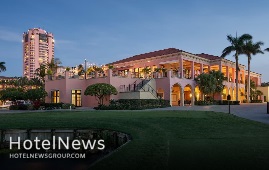
South Florida’s iconic Boca Raton Resort & Club announces the most significant evolution in its history, and its new-again name —The Boca Raton. For over four decades, from 1944 to 1988, The Boca Raton name signified a luxurious lifestyle unmatched worldwide. Over the coming months, The Boca Raton will usher in an entirely new perspective on travel, A New Golden Era. A New Golden Era at The Boca Raton and The Boca Raton Club promises an unrivaled destination beginning with a $175 million Phase One physical transformation to be unveiled during Winter 2021/2022. There will be bespoke enhancements to every guest experience, from exceptional accommodations to dynamic culinary concepts and innovative programming. The Boca Raton has a remarkable history as an internationally recognized landmark and a private escape for in-the-know travelers,” said Daniel A. Hostettler, President & CEO of The Boca Raton. “A New Golden Era will pay homage to the resort’s storied past while introducing innovative new amenities and experiences that will inspire both members and guests, and define The Boca Raton as one of the world’s most preeminent luxury resorts and private clubs.” Five Distinct Hotel Experiences, One Iconic Resort. The Boca Raton will feature a collection of five hotels located Beachside and Harborside, each with its own personality and style. Beach Club: The oceanfront luxury escape features three pools set on a private stretch of golden beach. The hotel’s new Mediterranean dining concepts, Marisol and the lobby lounge, are curated by notable lifestyle guru Colin Cowie. Bungalows: Ideal for extended stays, this three-story residential hideaway features two-bedroom suites with full kitchens and furnished terraces and balconies. Tucked in a serene corner of the property surrounded by a lush landscape, the Bungalows offer a private pool and dedicated amenities. Yacht Club: The adult-only, all-suite luxury hotel embodies refined lakefront leisure. Elegant suites feature private balconies, and views of Lake Boca Raton and its yacht-lined promenade. Personal concierges and floor valets prepare every detail for the perfect escape. Reopening Winter 2021. Cloister: Stay where it all started amidst grand architecture, lush grounds and hidden gardens as an unforgettable backdrop. Located in the heart of the action, the resort’s original structure is just steps from the 18-hole golf course, Racquet Club and spa. The Cloister is being revitalized and will reopen with immersive experiences and rotating art collections. Reopening Winter 2021. Tower: Providing elevated perspectives for sophisticated travelers, the 27-story tower is undergoing a $45 million complete transformation by Rockwell Group. With extraordinary vistas of sparkling waterways, the all new luxury hotel will introduce flexible suite configurations—two to three bedrooms—artful touches, bespoke amenities and butler service. Opening first quarter 2022. A World of Flavor. From fine dining to waterfront bites, The Boca Raton is creating one of the most exciting culinary destinations in the country, including four signature experiences with Major Food Group (MFG). The Flamingo Grill, opening this month, offers a glamorous take on the mid-century American chophouse. Forthcoming restaurants include Sadelle’s, the inventive, perennially packed brunch institution with locations in New York and Las Vegas, and all new concepts exploring Japanese and Italian cuisine. Only at The Boca Raton. This winter, the resort will unveil Harborside Pool Club, a four-acre lakefront oasis featuring luxury cabanas, four pools, 450-foot lazy river, two three-story high slides, double standing wave, retail boutique, 7,100 square foot event lawn, 5,000 square foot kids club, and a teens lounge, as well as new waterfront dining options. The Boca Raton’s 40,000 square foot wellness oasis has unveiled a new name, Spa Palmera, and new treatments. This winter, Spa Palmera will showcase a refreshed design and additional programming. New one-of-a-kind experiences include a supercar racing adventure, perfect for thrill seekers. Fashionistas may opt for a curated shopping day with a personal stylist, while couples can spend the afternoon on a private boat, complete with snorkeling and live entertainment. Resort owners MSD Partners and Northview Hotel Group are stewarding the property into its new phase with an award-winning team of builders and creators. Visionaries include architecture and design firm Rockwell Group, landscape architecture firm EDSA, branding and marketing agency King & Partners, and GarciaStromberg—a firm of architects, designers and artists.
Create: Jul 17, 2021 Edit: Jul 17, 2021 International News
The restart of international travel could be seriously delayed without worldwide reciprocal recognition of all approved COVID-19 vaccines, says the World Travel & Tourism Council (WTTC).The global tourism body, which represents the global private Travel & Tourism sector, has issued its warning following concerns tourists face being turned away at the borders because countries don’t have a common list internationally recognised and approved COVID-19 vaccines.This comes just days after a number of British holidaymakers, who had been administered the Indian Covishield batch of the Oxford/AstraZeneca vaccine, were rejected entry into Malta despite the drug being chemically identical to the UK-made vaccine.Over the past few weeks reports of holidaymakers facing obstacles to entry have been on the rise, with some even being prevented from boarding their flights to destinations.WTTC believes that once again, the lack of international coordination to agree on a list of approved vaccines, is creating yet another major stumbling block for the restart of international travel.This comes despite most vaccines have secured the approval of the World Health Organisation (WHO) or Stringent Regulatory Authorities (SRAs), such as the UK’s the Medicines and Healthcare products Regulatory Agency (MHRA) and the Food and Drug Administration in the US, and the European Medicines Agency (EMA).Reports of travellers being turned away because they have the ‘wrong’ vaccine batches or ‘unrecognised’ vaccines have fueled concern from consumers, deterring them from booking and thereby damaging the already struggling Travel & Tourism sector.The plea for reciprocal recognition for all vaccines and vaccine batches forms part of WTTC’s four new guidelines which are aimed at safely resuming international mobility and save the millions of jobs and livelihoods which depend on this sector, while kick-starting the global economic recovery.Virginia Messina, Senior Vice President WTTC, said: “Reciprocal recognition of all vaccine types and batches is essential if we are to avoid any further unnecessary and damaging delay to restarting international travel.“The failure of countries to agree on a common list of all approved and recognised vaccines is of huge concern to WTTC, as we know every day travel is curbed, more cash-strapped Travel & Tourism businesses face even greater strain, pushing ever more to the brink of bankruptcy.“We can avoid this by having a fully recognised list of all the approved vaccines – and vaccine batches – which should be the key to unlocking international travel, not the door to preventing it.“It will also give holidaymakers and travellers the confidence they need to book trips, flights and cruises, confident in the knowledge that their fully-vaccinated status will be internationally recognised.”WTTC says the restoration of safe international travel can be achieved by following its four guidelines.Through a combination of COVID-19 testing, vaccination, digital health travel passes and the use of health and safety protocols, such as wearing face masks, safe international mobility can resume while at the same time saving millions of jobs and livelihoods which depend on the sector and kick-starting the global economic recovery. WTTC’s fundamental guidelines to restore international mobility while safeguarding public health include: Appropriately reduced protocols for vaccinated travellers, including no need for testing or quarantine for those fully vaccinated. Global recognition for international travel of all vaccines authorised for use and deemed safe and effective by the WHO or by the WHO recognised SRAs.A data driven, risk-based and internationally harmonised approach to re-establishing freedom of movement, that is consistent across countries, easy to communicate and clearly understood by travellers.Global adoption of ‘digital health passes’ which enable travellers to easily obtain and verify their vaccination status, negative COVID test result or natural immunity from a previous infection. These must work with existing border control and travel operator systems accepted by all countries. Digital verification of a traveller’s COVID status prior to travel will avoid lengthy and unsafe queues in transport hubs and terminals.Continued implementation of high-quality health and safety standards throughout all areas of the Travel & Tourism sector, including continued adoption of the WTTC’s Safe Travel Protocols and Safe Travel Stamp, with the continued wearing of face masks in crowded and enclosed areas as well as on all forms of public transport. WTTC advocates the full implementation of these proportionate and responsible guidelines for travel during over the next few months, as many travel restrictions begin being eased as major travel markets begin to reopen.This is against the backdrop of a successful vaccination roll out, with a subsequent decrease in deaths, cases, and hospitalisations in many countries. However, variants will continue to be cause of concern as the world struggles to emerge from the effects of the pandemic.
Create: Jul 17, 2021 Edit: Jul 17, 2021 International News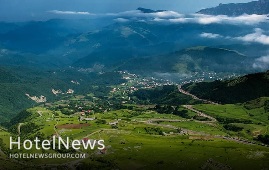
Countries are defined geographically and politically by their borders. Borders are fundamentally linked to tourism, as travel almost always entails crossing a political or another boundary, and borderlands are often the first or last areas of a country visited by travelers. Iran has a total of 5,894 kilometers of land borders with its neighbors Afghanistan, Armenia, Azerbaijan, Iraq, Pakistan, Turkey, and Turkmenistan. It also borders the Caspian Sea, Persian Gulf, and the Gulf of Oman. Several border cities dot Iran, owing to the vast size of the country’s land borders. The border cities of Iran, however, have limited tourist numbers due to their long distances from the country’s center, as well as the fact that they have not been properly promoted for foreign visitors. Here are some of the most beautiful border cities that have always gone unnoticed. Astara Astara, an Iranian border city and port, offers a wide range of tourist attractions. It is a major tourist and economic center on the west coast of the Caspian Sea, in the Gilan province. It is the last point of the border between Iran and Azerbaijan. Hakim Nezami School and Shindan Castle are two of the city’s historical sites. Astara Lagoon, Astarachay river, Qarasu river, Chelvand river, Darband river, Lavandvil river, and Espinas mountain are some of the city’s natural attractions. Among Iran’s border regions, Astara is the only area that has not experienced any tensions in the last 80 years, making it one of the safest. There is a great deal of tourism in this region because of the natural beauty and the weather. Jolfa Located in northwestern East Azarbaijan province, Jolfa borders the countries of Armenia and the Republic of Azerbaijan to the north. Jolfa has a semi-desert climate with warm summers and partly cold, moderate winters. The special importance of Jolfa is due to its historical monuments, strategic location, and appropriate geographical features, as well as its proximity to the commercial and industrial free zone of Aras (one of Iran’s most important commercial centers). Seyyed Abolqasem Nabati tomb, Duzal tower, Saint Stepanos Monastery, Nane Maryam church, ruined mill, Ushtibin village, St. Mary church, Baba Yaqub shrine, Ali Beyg fort, Jolfa historical bath and etc., are the most significant monuments and tourist attractions in this area. The region’s economy is fueled by the abundance of water resources, grasslands, and forest reserves, as well as its high potential for growth and industrialization. Minerals, agriculture, livestock, services, and scientific and training development also play an important role. There are a lot of cotton fields in this city, and weaving is the major activity of the locals. Jolfa people are Azeri and they speak in Turki Azerbaijani in their own local dialect. Maku Maku is located northwestern province of West Azarbaijan and enjoys a unique geographical and natural location. In a valley passes through which the Zangmar River divides Maku into two parts, the city is located 1294 meters above sea level. The city is surrounded by the Qarasu River and Turkey from the north, the Aras River (the Nakhchivan Autonomous Republic and Armenia) from the east, Khoy from the south, and Turkey from the west. Due to the surrounding stony mountains, this city has a moderate climate in winter and a hotter climate in summer. Mountainous landscapes, flourishing pastures, hot water springs, waterfalls, protected areas, and hunting grounds are some of the tourist attractions of this area. Maku is located on the main Tabriz-Bazargan road and has an excellent strategic location. Among the city’s most significant features is its role as the country’s only land border business and a link to Europe. As part of Maku’s economy, there is an industrial complex on the Maku-Bazargan road. Maku people rely on cross-border trade, agriculture, and animal husbandry for their livelihood. Zahedan The city of Zahedan is located in eastern Iran close to the Pakistani border. There are high lands around Zahedan, so it looks like a pit. The city is home to the mountains of Oshtoran Koh, Anjir Dan, Jico, Pir Khan, and Mulk-e Siah. Climates in this area are characterized by intense heat, aridity, and warmth. Zahedan consists of 4 parts: "Markazi", "Mir Jave", "Nosrat Abad", and "Korin", three cities, and eight rural districts. It is an academic, cultural, historical, and religious city that has a service structure. Zahedan enjoys a privileged geographic and border location which makes it an ideal place for trade with India thanks to its convenient location on the Afghanistan-Pakistan route. Pakistan’s railway enters Iran from the Mirjaveh border and Iran’s railway ends in this city. By being located among the Khorasan, Kerman, and Chabahar land routes, Zahedan is one of the Iran transit routes. Zahedan’s economy depends on agriculture in addition to trade. There are subterranean, spring, and river wells that supply the water this city needs. This area is full of color in its literature, clothing, and music. Zahedan’s cultural diversity results from migration. A good example of Baluch handicrafts is the klim bafi, needlework, seke dozi, and pottery. Zahedan architecture is influenced by Iran's ancient architecture due to its tropical weather. Baneh One of the border cities between Iran and Iraq, Baneh is located in the western province of Kordestan. The city is located 20 kilometers from the Iranian-Iraqi border, 60 kilometers southwest of Saqez and 70 kilometers southeast of Sardasht. The city is known for its large and natural oak forests. In 1984, Iraqi planes bombed Baneh and some nearby settlements during the Iran-Iraq war (1980-1988). Dul Arzan village, Shevi cave, Baneh Dam, Sorin complex are among the city’s tourist attractions, however, most of its reputation comes from its border malls and its status as a trade center. Local people speak Kurdish with Slemani accent.
Create: Jul 17, 2021 Edit: Jul 17, 2021 Regional News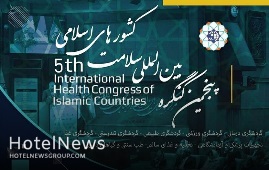
The 5th edition of the International Health Congress of Islamic Countries started in Tehran on Tuesday, aiming to find new opportunities for cooperation and development of health tourism among Muslim nations. Being held at IRIB International Conference Center, the congress is organized by the Health Tourism Development Center of Islamic Countries (HTDC) and supported by ministries, federations, institutions, and organizations in health tourism as well as private and governmental health service providers, the official website of the event announced. The three-day event has brought together seniors and experts from governmental and private sectors in the health tourism industry. The congress is being held in five specialized panel discussions of medical tourism, sports tourism, natural, wellness, and food tourism, medical and laboratory equipment, and nutrition and healthy food. The event started its official operations in 2015 with the aim of playing an effective role in developing economic relations and facilitating the networks between stakeholders in the health and health tourism industry. The developing health tourism industry is one of the most important fields of Iran’s travel sector, which is trying to prove its capabilities and capacities in attracting medical and health tourists to the country. Many domestic experts believe that medical tourism in Iran is a win-win opportunity both for the country and foreign patients, as they are offered affordable yet quality treatment services and the country gains considerable foreign currency. Iran’s two most popular medical tourist cities are Tehran and Mashhad, but the coronavirus outbreak has significantly reduced the number of travelers. Iran is one of the major destinations for health tourism in the region, and patients with 55 different nationalities, mostly from neighboring countries including Iraq, Kuwait, Bahrain, Qatar, Saudi Arabia, Oman, Pakistan, Afghanistan, Tajikistan, and Turkmenistan are seeking to use Iran’s services and facilities in this field. Iranian hospitals admitted nearly 70,000 foreign patients over the Iranian calendar year 1397 (March 2018 – March 2019) and it made an economic contribution of around $1.2 billion to the country, according to the medical tourism department at the Ministry of Health. In April 2018, the rotating presidency of the International Health Tourism Conference of Economic Cooperation Organization (ECO) was handed to the Islamic Republic for a three-year term. Mohammad Jahangiri who presides over a national center for developing health tourism said in May 2018 that Iran can annually earn $7 billion in medical and health tourism, though the sector now brings in only one-seventh or even lesser of the sum. The Islamic Republic has set its goals to exceed its yearly medical travelers to around 2 million in the Iranian calendar year 1404.
Create: Jul 17, 2021 Edit: Jul 17, 2021 Regional News
Hyatt Place London City East, the third Hyatt Place hotel in London, is officially open, expanding the Hyatt Place brand’s footprint globally in markets that matter most to guests and World of Hyatt members. The new hotel features the Hyatt Place brand’s intuitive design, casual atmosphere and practical amenities, such as free Wi-Fi and 24-hour food offerings. Hyatt Place London City East is managed by Cycas Hospitality. Because Hyatt’s efforts are grounded in listening and fueled by care, Hyatt Place hotels combine style, innovation and 24/7 conveniences to create an easy to navigate experience for today’s multi-tasking traveler. The property is located a short walk from Liverpool Street and close to some of the capital’s most important cultural and artistic highlights, including Brick Lane, Spitalfield’s Market, and the Tower of London. Hyatt Place London City East offers guests a stylish place where they can be productive in a laid-back and casual environment. “With its central location and stylish design incorporating local art links, we’re confident the Hyatt Place concept will prove as popular with those enjoying a short break in the capital as it will with anyone traveling on business,” said Michael Mason-Shaw, general manager Hyatt Place London City East. “Above all, we look forward to introducing more people to the casual yet practical atmosphere associated with the Hyatt Place brand.” Hyatt Place London City East offers: 280 spacious guestrooms with separate spaces to sleep, work and play; many of the guestrooms feature their own private terrace and/or city skyline viewsBreakfast Bar with locally inspired breakfast options every morning in the form of a casual yet elevated buffetPocketsquare Skyline Bar and Terrace serving a perfectly curated cocktail and beverage menu that can be enjoyed with uninterrupted views of London’s iconic skylineZoom Restaurant providing a range of responsibly sourced global and local cuisineThe Market serving freshly prepared meals anytime, day or nightThe Bar featuring specialty coffees and premium beers, as well as wines and cocktailsNecessities program for forgotten items that guests can buy, borrow or enjoy for freeFree Wi-Fi throughout hotel and guestroomsTwo flexible event spaces each offering flexible, high-tech meeting/function space for up to 20 guestsFitness Center featuring cardio equipment with LCD touchscreens“London is a vibrant city, filled with friendly people, great neighborhoods, and an ever-expanding list of great places to visit and things to do or see,” said Wayne Androliakos, Chief Operating Officer, Cycas Hospitality. “Our hotel is central to all of them, and we are confident that the Hyatt Place London City East will exceed guest expectations while providing them with everything they need while exploring the Capital.” HYATT PLACE LONDON CITY EAST LEADERSHIP Hyatt Place London City East is under the leadership of Michael Mason-Shaw, General Manager, Director of Operations Pino Dispinseri, and Director of Sales Silvia Abreu. In his role, Michael is directly responsible for managing the day-to-day operations of the hotel, including overseeing the hotel’s approximately 45 associates and ensuring guests encounter the thoughtful service for which the Hyatt Place brand is known. Dispinseri oversees the day-to-day activities and ensures the highest level of service is provided to each guest. Abreu is responsible for providing sales service and support to travelers and meeting planners frequenting the London area.
Create: Jul 7, 2021 Edit: Jul 7, 2021 International News
IHG® Hotels & Resorts, one of the world’s leading hotel companies, has announced the signing of InterContinental Riyadh King Fahed Road, as part of a Master Development Agreement (MDA) with RIVA Development Company via its wholly owned subsidiary RIVA Hospitality for Hotel Services Company. The latest development follows the signing of Hotel Indigo Riyadh King Abdallah Road, and is the second of at least 7 hotels to be announced with the partner, with all openings set to take place in Saudi Arabia across IHG’s portfolio of brands in the coming years. Pioneering luxury travel since 1946, this year, the iconic InterContinental brand is celebrating its 75th Diamond anniversary . The brand also has a strong legacy in Saudi Arabia, having opened InterContinental Riyadh, in 1975 – IHG, has since positioned itself as one of the largest hospitality players in the country. Over the years, IHG continues evolve its luxury offering and have a strong foothold in the segment through the flagship brand, InterContinental which has great recognition in the Kingdom. Expected to open in March 2025, InterContinental Riyadh King Fahed Road will add to IHG’s current brand portfolio of 9 operating InterContinental hotels in the Kingdom. The hotel will represent the best in class product with a refreshed, modern design, and will feature 250 elegantly appointed guest rooms and 150-unit apartments as part of InterContinental Residences as well as a pool, fitness centre and spa where guests can relax and rejuvenate. True to the evolved brand, the hotel will offer its guests bespoke and intuitive services. Additionally, true Saudi hospitality can be experienced at any of the hotel’s five dining options which will provide guests with a diverse and fine selection of culinary delights to enjoy. InterContinental Riyadh King Fahed Road will also feature a business centre, 784 sqm of meeting and events space including a 600 sqm ballroom to cater to the demands of business travelers visiting Saudi Arabia’s capital city. Speaking on the announcement, Haitham Mattar, Managing Director, India, Middle East & Africa, IHG said: “As part of our continued growth strategy, and in line with the Saudi Tourism Development Strategy, we are proud to partner with RIVA Development Company as we expand our presence in the Kingdom of Saudi Arabia. IHG has a strong and credible reputation in the luxury segment through the iconic InterContinental brand which has enjoyed great success in Saudi Arabia over the last four decades. InterContinental Riyadh King Fahed Road will be a brand defining property and will offer guests exceptional experiences immersed in local hospitality and international service excellence. He added : Vision 2030 provides great opportunity for the hospitality sector and we have ambitious plans to support the country’s strategic growth plan, now and into the future. We look forward to continuing IHG’s legacy with the opening of InterContinental Riyadh King Fahed Road.” Engr. Mugbel Bin Suleiman Al Thukair, Co-Founder, RIVA Development Company, Chairman, RIVA Hospitality for Hotel Services Company added: “ We are delighted to announce the first signing of seven hotels to be opened with IHG in Saudi Arabia. As part of RIVA keenness on being an essential part of the Saud Vision 2030 lead by HRC Mohamad Bin Salam Bin Abdel Aziz Al Saoud, and as part of an evolving metropolitan hub, Riyadh is the ideal destination to begin our journey with IHG, with increasing visitor numbers expected to the capital in the coming years. InterContinental is an iconic and prestigious brand, with a long-standing reputation in Saudi Arabia and we look forward to working alongside IHG to bring provide guests with a luxurious and truly memorable experience when we open in 2025.” IHG currently operates 38 hotels across 5 brands in Saudi Arabia, including: InterContinental, Crowne Plaza, Holiday Inn , Staybridge Suites and voco with a further 20 hotels in the development pipeline due to open within the next three to five years.
Create: Jul 7, 2021 Edit: Jul 7, 2021 International News
